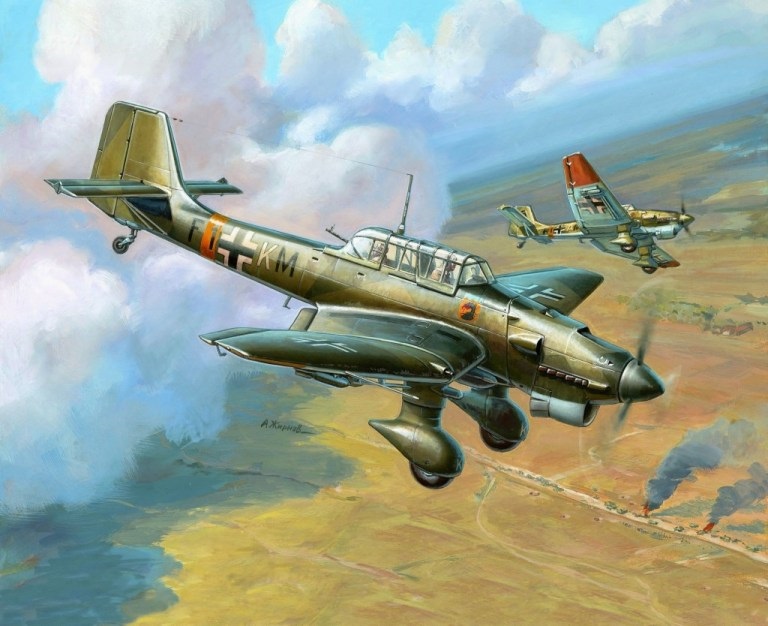
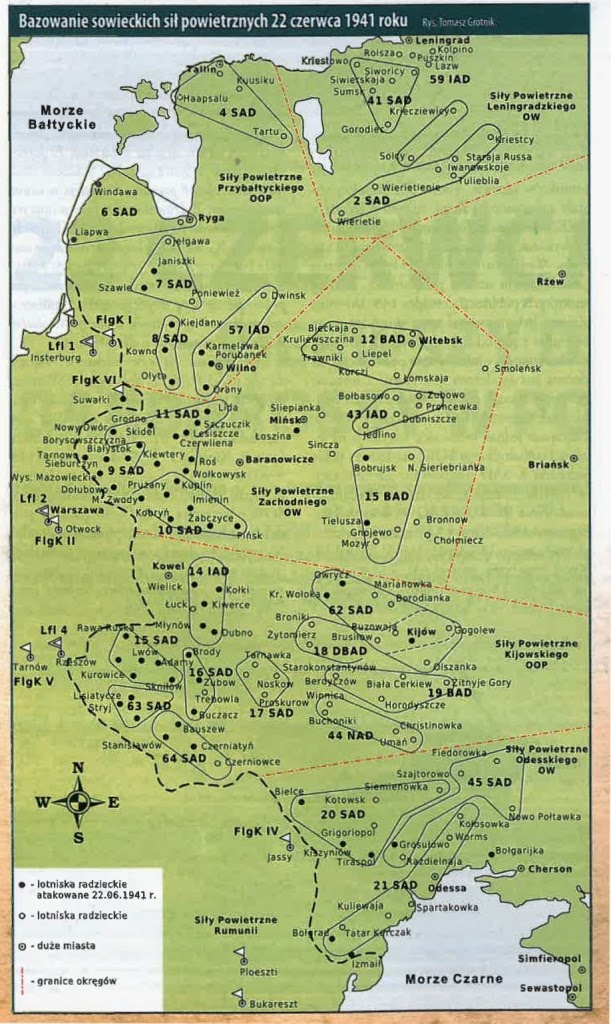
By Major Lonnie O.
Ratley III
Barbarossa (” red beard”), surname
of Frederick I of Germany ( 1123-1190). It is said that he never died but is
still sleeping in Kyffhauserberg in Thuringia. There he sits at a stone table
with his six knights, waiting “fulness of time,” when he will come
form his cave to rescue Germany form Bondage and give her the foremost place of
all the world. His beard has grown through the table-slab but must wind itself
thrice around the table before his second advent.1
Also, Barbarossa
was the code name for Germany’s invasion of the Soviet Union starting on 22
June 1941. At 0340 on that date, the combined air assets of four Luftwaffe air
fleets struck a devastating blow to the Red Air Force—a blow from which, in
many respects, it has not recovered to this day. The Luftwaffe used 1280
operationally ready combat aircraft for the first series of air strikes in the
war against the Soviet Union.2 With these air assets the Luftwaffe
destroyed more than 2000 Soviet aircraft on the first day of the campaign in
approximately 18 hours of combat,3 against their own loss of 35.4
In terms of the number of enemy aircraft destroyed versus the number of
friendly aircraft lost, the initial Luftwaffe attack against Russia is the most
successful operation in the history of air power. Of the 35 German aircraft
lost, approximately 15 were noncombat related. The problem was the
malfunctioning of fragmentation bomblettes that occasionally detonated while
still in aircraft bomb bays or upon landing. If one takes only the losses of
German aircraft to Soviet defenses, the ratio of German aircraft losses to Russian
aircraft losses is approximately one to one hundred (1:100).
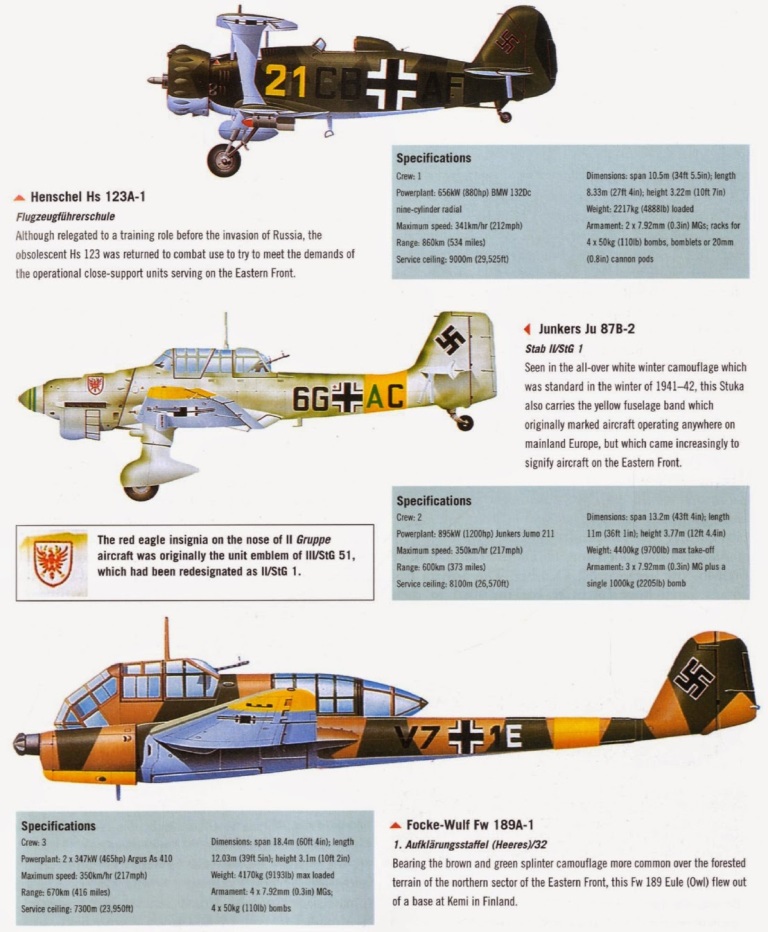
The first
Luftwaffe strikes were conducted between 0305 and 0315 in concert with the
German Army’s ground attack. Twenty to thirty aircrews had been previously
handpicked to deliver special fragmentation bombs (SD-2, 2 kg bomblettes and
SD-10, 10 kg bomblettes) against key Soviet airfields, a flight of three
aircraft being assigned to each field. The purpose of these early attacks was
to cause disruption and confusion as well as to preclude dispersion of Soviet
planes until the main blow was struck approximately 25 minutes later.5
There was
considerable controversy between the German Army and the Luftwaffe over the
timing of the first air attacks. The army position was firm: the ground commanders
wanted to attack at first light to achieve the maximum amount of tactical
surprise and avoid the problems of control in a night attack. The Luftwaffe, on
the other hand, was tasked with destroying the Red air forces, so that the army
could operate without fear of Russian air attacks and so the Luftwaffe could
provide air support for the attacking German ground forces. If the army
attacked first, then the Soviet Air Force units would be alerted and would most
probably retire to airfields beyond the reach of the Luftwaffe.6 The
resultant compromise was the decision to select a few special crews for
missions with times on target of 0315, the same time as the beginning of the
army attack in the area of Army Group Center.7
Luftwaffe Targeting Priorities
The initial
mission of the Luftwaffe for the opening stage of Barbarossa was
straightforward and specific: destroy the Red Air Force and its ground
organization.8 After completion of this task, the Luftwaffe was to
concentrate on support of the advancing German ground forces.9 These
two missions can best be respectively defined as the first mission and the main
mission of the Luftwaffe.10 The Luftwaffe had to fulfill the first
mission (elimination of the Red Air Force) prior to concentrating on the main
mission, support of the German Army.
Regarding the
first mission of the Luftwaffe in Barbarossa, destruction of the Red Air Force
and its ground organization, the following priorities were planned:
• Destruction of
modern aircraft and the Red Air Force ground organization.
• Destruction of
production facilities for aircraft and aircraft engines.
• Destruction of
aircraft with “M” (modern) engines.
• Destruction of
other aircraft.11
Bombing of the
Russian aircraft industry was not possible at the start of Barbarossa because
the Luftwaffe had no bombers with sufficient range and payload to reach the
Russian factories.12 The highly successful attacks of the first few
days against the Red Air Force were not an end in themselves. The Red Air Force
had to be eliminated so that the German Army could move without fear of Russian
air interference and so that the Luftwaffe could concentrate on supporting
German Army operations.
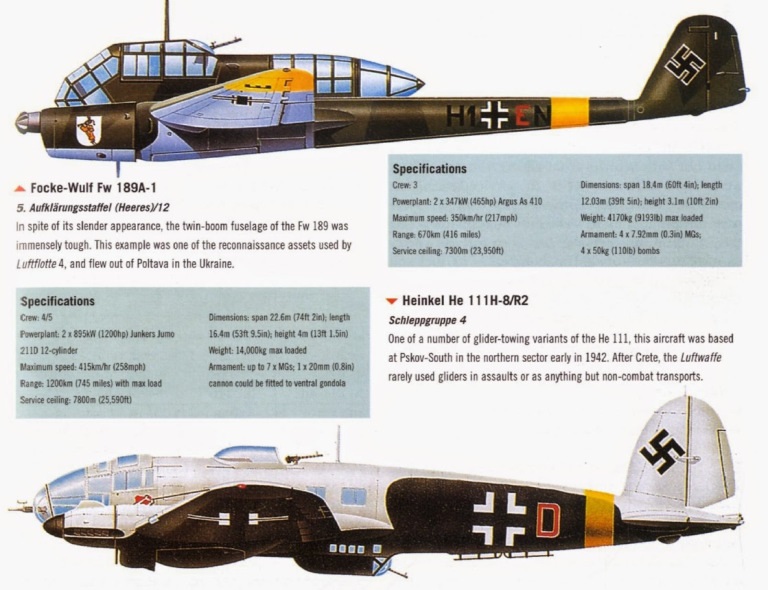
In order to
develop a clearer perspective of Barbarossa’s concept, one must have an understanding
of the strategic geography of Germany. Germany was, even in 1941, a relatively
small country. Germany was resource poor with no natural defensive borders.
These factors— size, lack of natural borders, and insufficient
resources—dictated the traditional Prussian-German military strategy; wars had
to be short as there were not enough natural resources to support a war of
attrition. The armed forces had to concentrate on quality and efficiency as the
population base could not support expendable human resources. Finally, as space
was at a premium, the military strategy had to concentrate on destroying the
enemy forces; there was no room for long-drawn-out strategic maneuvering. All
of these factors drove the Germans to develop the theory of the Vernichtungsschlacht
or battle of destruction, the classic strategy that would quickly seek a
decisive battle with the enemy to knock the opponent out of the war. Under
these circumstances the concept of Auftragstaktik or mission tactics was
a natural guiding principle of German military operations at all levels of
command.13 Essentially Auftragstaktik meant allowing
decisions to be made at the lowest possible level in the chain of command.
Furthermore, Germany had to make optimum use of its leaders as Germany could
count on being outnumbered by its opponents. In Auftragstaktik, the
higher echelon assigned the objective to the lower echelon. The lower echelon
determined how the objective was to be taken. Orders were short, simple, easily
understood, and often only verbal. A commander at any level, from squad leader
to field marshal, was a real commander, not merely a telephone exchange or
copying machine passing on the directives of higher headquarters to subordinate
units.
The concept of Schwerpunkt
or point of critical emphasis must also be understood, as Barbarossa’s initial
success was, in large part, due to careful selection of Schwerpunkte.14
Barbarossa, in
its original form, was not a unique German military operation, just a good one.15
It was one in a long series of successful operations, having been
preceded by Königgrätz, Sedan, the Schlieffen Plan of 1914, and the Manstein
Plan in 1940.
The Luftwaffe’s
military style was similar to that of the German Army. Auftragstaktik was
a principle used as much by the Luftwaffe as it was in the German Army. The Schwerpunkt
concept also manifested itself in the strong emphasis that the German Air Force
placed on dive bombing as opposed to level carpet or area bombing. The
Luftwaffe was flexible, aggressive, and tactically oriented. The failure of the
German bombing campaign against Great Britain and its associated lessons were
clear to the German military leadership prior to the start of Barbarossa.
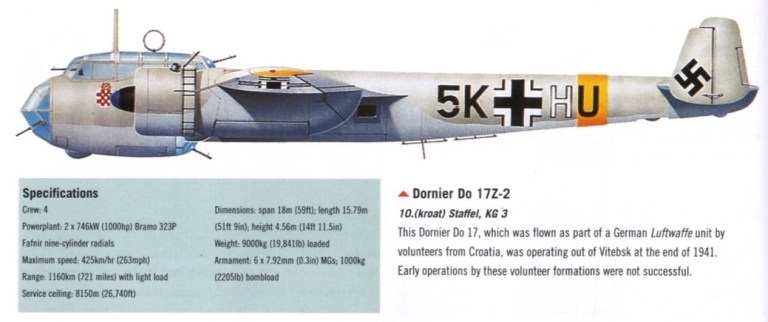
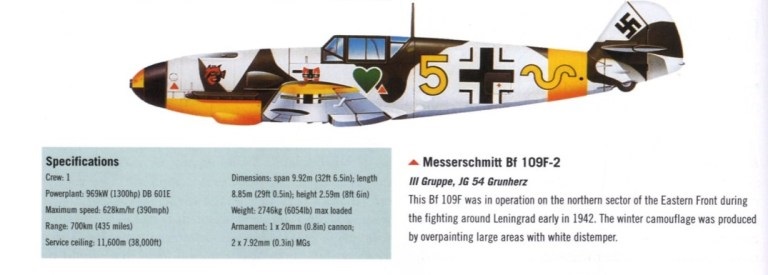
The German air
campaign in Barbarossa provides an excellent example of the Luftwaffe’s
operational style. Lower echelons—the squadron level and even flight
level—decided the tactics, weapons, and size of formations to use in destroying
the targets designated by higher echelons. Interference from higher
headquarters was, in general, kept to a minimum, and aircrew opinions were
highly regarded.
Selection of
targets for the Luftwaffe was a logical application of traditional German
strategy: namely, destroy in short order the enemy’s ability to conduct warfare
by destroying the enemy’s military forces. The Luftwaffe was told to plan for a
short war, and in Barbarossa, as originally planned, strategic targets for
aircraft were irrelevant. The general concept of the operation was the
destruction of the mass of the Red Army in the western part of the U.S.S.R.
Strategic targets—factories, power plants, population centers—had no bearing on
the outcome of a blitz or lightning campaign of short duration. The Luftwaffe
in Barbarossa was totally committed to tactical support of the German Army. In
the words of Field Marshal Kesselring: “I instructed my air force and flak
generals to consider the wishes of the Army as my orders.16
Target Planning
Major Rudolf
Loytved-Hardegg was officially assigned to Air Fleet One as Chief of
Intelligence in March 1941.17 He was tasked with determining the
order of battle of the Red Air Force and later the targeting of the Russian
aircraft and ground installations. The units that came under his control for
intelligence gathering consisted of two radio intercept sites, a long-range
reconnaissance squadron (Lufthansa)18 and a long-range
reconnaissance squadron (regular Luftwaffe), and finally, access to Reichsfuehrer
Heinrich Himmler’s security service organization for screening émigrés
from the Soviet Union.
The Luftwaffe
High Command directed Loytved-Hardegg to investigate the following special
points of interest:
• Is it true that
9000 Soviet aircraft are still in the western part of the U.S.S.R.?
• Were these 9000
aircraft supplemented with modern aircraft?
•Where were the
industrial plants producing modern aircraft and modern engines?
It is noteworthy
that the collection of intelligence data for targeting the highly successful
Luftwaffe operation during the first critical days of Barbarossa was handled by
a major with a staff of three officers. The same staff also designated all
Luftwaffe targets opposite the German Army Groups North and Center. The success
of the Luftwaffe strikes makes a convincing argument for small, competent
planning staffs.
Two incidents
that occurred during this intelligence-gathering phase are particularly
significant. The first involved a Luftwaffe long-range reconnaissance mission
in a newly developed special reconnaissance aircraft, the Junkers Ju 86P, which
was capable of reaching altitudes of 34,000 feet. On a mission deep into
Russian territory, one Ju 86P was forced down by a Russian interceptor. This
concerned Major Loytved-Hardegg, as the general impression in early 1941 had
been that the Russians had no modern aircraft capable of intercepting German
aircraft above 30,000 feet.
Another incident
involved a recently emigrated engineer of German ancestry who had been allowed
to leave the Soviet Union under the terms of the recently negotiated
Russo-German Nonaggression Pact (1939). The engineer was screened because of
his employment in an aircraft factory. The émigré was quickly identified as an
expert in alloy technology. His engineering work in a Russian aircraft engine
factory had produced such excellent results that the Russians paid him in gold.
Loytved-Hardegg was astounded that a man of such talent had been released by
the Russians and that Russia had such highly skilled personnel in their
aircraft industry. These two incidents led Loytved-Hardegg to be more concerned
about the technical capability of the Russians. Loytved-Hardegg was of the
opinion that the Russians were not as backward and unsophisticated in certain
technical fields vital to war production as many people in Germany and the West
had been led to believe.
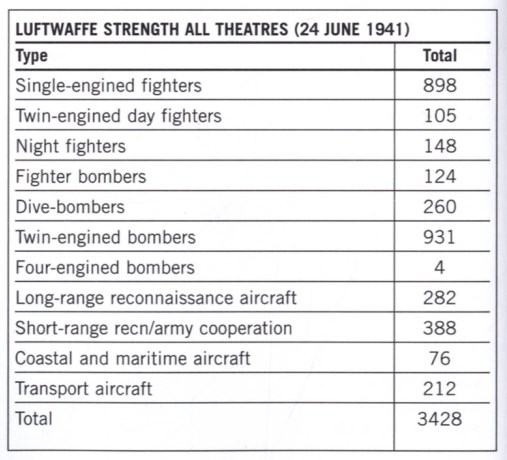
Loytved-Hardegg
estimated that there were approximately 15,000 aircraft in the Red Air Force,
of which 350 were considered by the Germans to be modern aircraft. The
Loytved-Hardegg intelligence organization determined that there were about 2000
airfields in western U.S.S.R. This information, when presented to Reichsmarschall
Hermann Göring, was not well received.19 According to
Loytved-Hardegg, Göring did not pass this information on to the Armed Forces
High Command—it was not conceivable to Göring that a “primitive”
people such as the Russians could have this many aircraft.
Loytved-Hardegg’s
reservations never had a chance of altering Hitler’s decision to attack the
Soviet Union. Although he was persona1ly apprehensive about the chances of
success, Loytved-Hardegg worked thoroughly and, as subsequent events proved,
effectively in selecting targets for the Luftwaffe. The targeting priorities
established by Loytved-Hardegg for the first day of Barbarossa were the
following:
• New aircraft
with associated ground organization.
• Production
facilities for modern aircraft and modern aircraft engines.
• Aircraft with
modern engines.
• Other aircraft.
• Red Air Force
ground organization.
• Support of the
Army.
The second of the
priorities was impossible to fulfill as the factories were beyond the range of
German bombers available at that time.
Approximately
2000 Soviet airfields within a 250 kilometer belt from the western border of
the U.S.S.R. were known to the Germans at the start of Barbarossa.2°
Of these airfields, four in the north and seven opposite German Army Group
Center had modern aircraft. Each occupied airfield had an average of 30
aircraft.
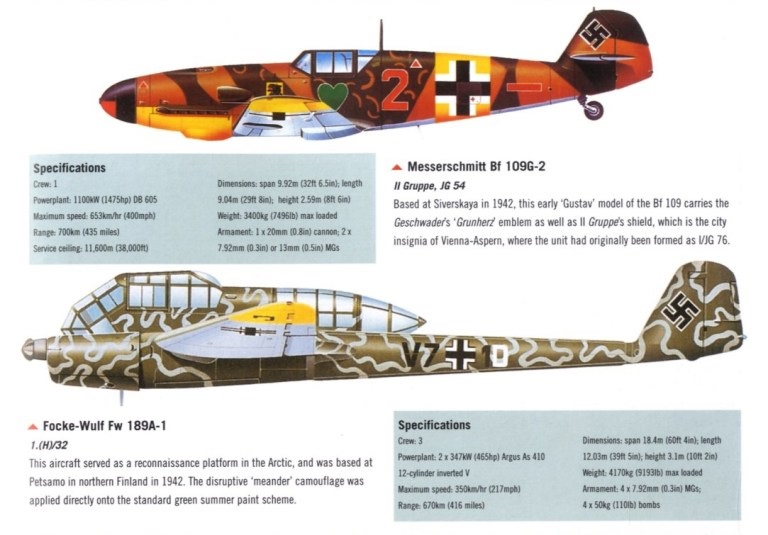
Major
Loytved-Hardegg’s organization prepared sealed target folders for each
Luftwaffe group commander involved in Barbarossa. The group commanders passed
the appropriate target information on to the individual squadron commanders,
who in turn passed the data to their aircrews. Security was therefore
compartmentalized. Many aircrews had only eight hours notice before they took
off for their missioris.21 It was felt that more effect could be
achieved by surprise rather than by detailed planning, which would entail
probable security leaks. Extensive aircrew mission planning was also considered
less critical as most of the crews were experienced and their training had
emphasized flexibility. The principle of Auftragstaktik provided the
Luftwaffe with the capability of flexible tactics and maximum utilization of
aircrew skills. The Luftwaffe leadership did not consider the very short
notification as any great liability.
After all the
analysis was completed, targeting for the Luftwaffe was finalized. It is
noteworthy that specific targets for missions after the disruptive and
first-wave Luftwaffe attacks were not assigned.22 The Luftwaffe
waited for reports of bombing effects from returning aircrews and
reconnaissance pilots before assigning subsequent air strikes—as some targets
would need to be struck again, while others had been completely destroyed or
were not worth striking at all. The final target list for the first wave of
Luftwaffe air attacks in Barbarossa was as follows: 31 airfields, 3 suspected
higher staff quarters, 2 barracks, 2 artillery positions, 1 bunker position, 1
petroleum, oil and lubricants depot, and the port facilities at Sevastopol.23
The success of the Luftwaffe attacks was to astound both the Germans had the
Russians.
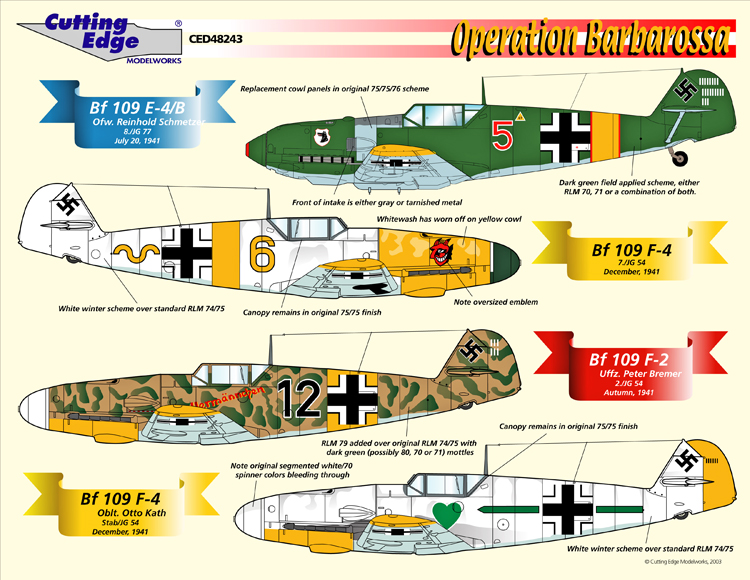
Execution
A total of 868
aircraft—637 strike aircraft (Stukas, bombers, destroyers) and 231 fighters (Me
109s)—took part in the first wave against the previously mentioned targets.24
Results from air strikes against targets other than aircraft are not
available, for an exact accounting was not made at the time of the attack.
However, aircraft loses, friendly and enemy, are known. Preliminary Soviet
aircraft losses from first Luftwaffe strikes totaled (conservatively) 222
destroyed in the air and 890 on the ground.25 German aircraft losses
for the first wave were as follows: 2 Me 109s, 1 Me 110, 1 Ju 87, 8 Ju 88s, and
6 He 111s. This total of 18 German aircraft is somewhat misleading as a number
of the losses were caused by weapon malfunctions with the SD-2 and SD-b
fragmentation bombs.26
Retired Luftwaffe
Colonel Robert Poetter has given a personal account of the first mission flown
by his unit in support of Army Group North.27 At that time Poetter
was a major commanding the I Group of Bomber Wing 76, equipped with Ju 88As.
His unit was stationed at Jesau south of Königsberg. Poetter’s target was the
Russian Kadania airfield in Lithuania. Poetter had learned about Barbarossa and
his group’s mission the day before from his commander, Lieutenant General
Foester, at a meeting of all wing and group commanders in I Air Corps.
Poetter had
complete freedom of action relative to the tactics to use in destroying the Red
Air Force aircraft and ground organization at the Kadania airfield. Using the
target folders prepared by Major Loytved-Hardegg, Colonel Poetter’s group
planned a high-level entry (4000 meters altitude), with a low-level attack and
low-level departure. The munitions used by the group’s attacking Ju 88As were
the SD-2 fragmentation bomblettes. Each Ju 88 was loaded with a total of 360
individual. SD-2s. The airfield target area had been divided, into three
sections, each one allocated to one of the three squadrons in I Group of Bomber
Wing 76.
The mission
started with 0210 takeoff and ended landing at 0403. After approaching the
Kadania airfield at higher altitude and sighting the targets, the Ju 88s dove
to low (treetop) altitude and made one pass with the SD-2s. Colonel Poetter
recalls seeing about 30 Russian aircraft at the field. The Luftwaffe group lost
only one aircraft, a Ju 88 which flew into an airborne SD-2 that had been
released from another Ju 88.
Poetter related
that a bomber unit to which he had previously been assigned, working at that
time (22 June 1941) with Army Group South, was severely restricted, by the air
corps commander, as to the type of tactics to use in the first day’s attacks
with the SD-2s. Not only the target but the exact ingress, egress, and tactics
were specified. In contrast to the relatively low loss rate for Poetter’s group
in the north, the other group’s losses were extremely high using the rigidly
specified tactics.28 The losses suffered by the unit in the south
were due mainly to small caliber fire; as ingress, egress, and attack were all
conducted at low level. Target identification was very difficult, and exposure
time to small caliber antiaircraft artillery (AAA) was longer. Poetter feels
that one of the major reasons for his group’s success, working under General
Foester, was that Foester allowed his commanders to determine the tactics that
they felt were best and did not dictate the manner in which operations were to
be carried out. In Poetter’s words: “We were told what we had to do, but
not how to do it.”
The enormity of
the Luftwaffe success for the first few days of the campaign, and especially
the first day, was dramatic. That first day the Germans traded 35 aircraft for
approximately 2000 Russian aircraft. Russian aircraft losses then tapered off
after the first few days of combat, illustrating the effect of surprise on
enemy loses early in the campaign. It is noteworthy that the operational
readiness rate of the Luftwaffe at the start of Barbarossa was only 70 percent.29
Had the Luftwaffe taken more time and devoted less energy to
eleventh-hour unit movements toward the east to participate in the campaign,
they could have pushed the operational readiness rate much closer to 100
percent. However, a determination was made that surprise was a more valuable
factor than mere numbers of attacking aircraft. The fact that only 868 combat
strike aircraft, of 1280 available for operations, were used in the first wave
of attacks supports this position. Commenting in his diary, on the success of
the Luftwaffe, General Otto Hoffmann von Waldu states that 80 percent of the
success of the attack was due to surprise.30
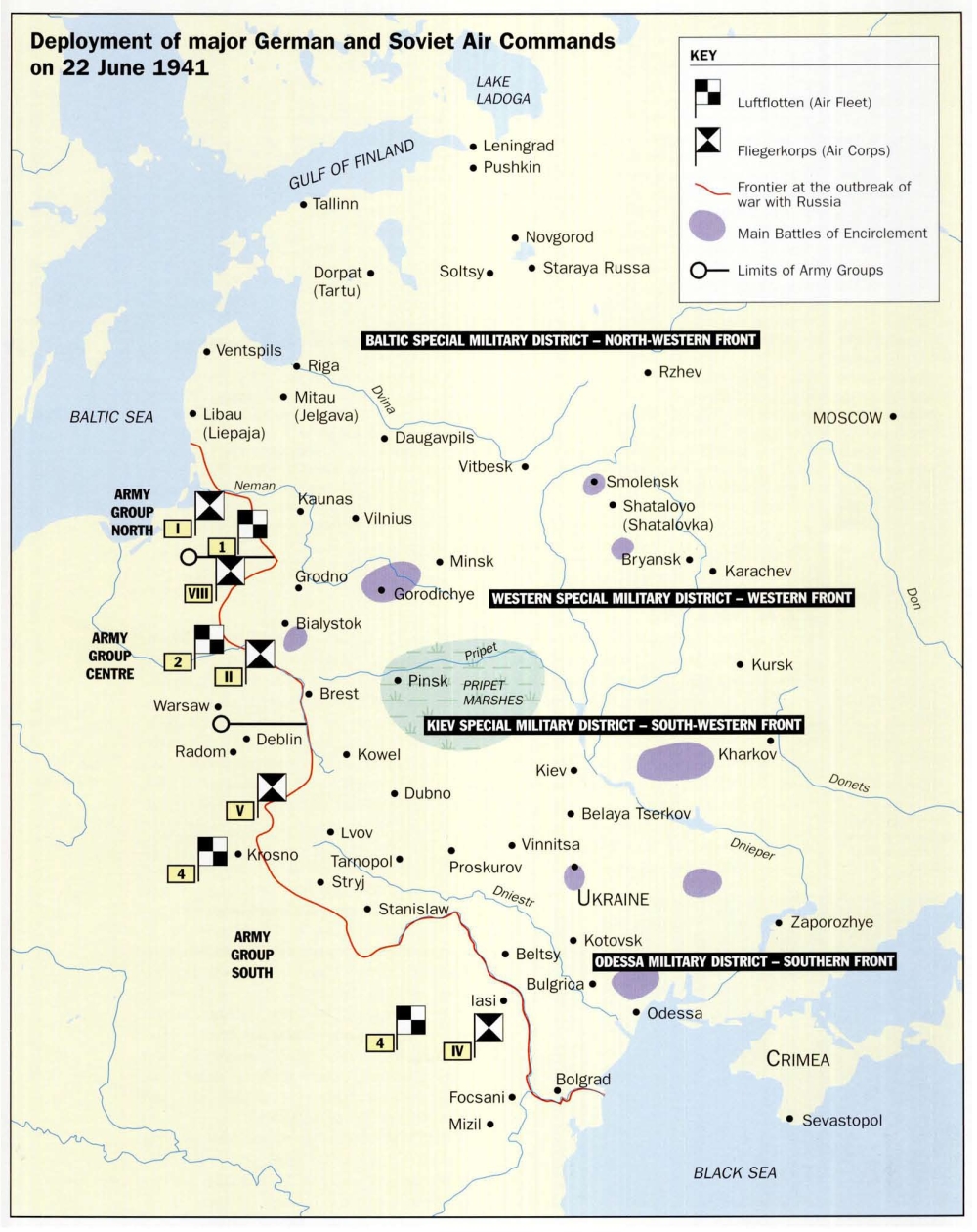
As a result of
the tremendous number of enemy aircraft destroyed during the first few days of
Barbarossa, the Russians suffered a severe loss of self-confidence in their
ability. Although tactics in general tended to be quite regimented, the Red Air
Force was the largest in the world in 1941, and the U.S.S.R. had an equally
large aircraft industry to support its air force.31 At that time the
Red Air Force was a power with which any potential aggressor had to reckon. The
soldiers and airmen of the Soviet Union had been constantly bombarded with
propaganda about the invincibility of the Red Army,32 so one can
imagine the tremendous shock that swept through the Red Air Force when the
magnitude of the initial Luftwaffe successes against the U.S.S.R. became known:
from the world’s largest air force to one that could not even maintain local
air superiority— all in one day. Throughout the war the Red Air Force improved,
but man for man and machine for machine, it was never a match for the
Luftwaffe. German close air support aircraft would often work without benefit
of air cover for protection from Soviet fighters,33 even when they
became engaged with enemy aircraft.
The rigidity of
Russian air tactics at the start of Barbarossa was almost unbelievable. Field
Marshal Erich von Manstein described an incident at a bridge on the Duna River
which had been captured intact by the Germans. On that occasion wave after wave
of Russian bombers attacked the bridge at low altitude. At the end of the day,
64 attacking Russian aircraft had been destroyed by German fighters and flak.34
In the Red Air Force, blind obedience to the flight leader was the norm.
General Lovtved-Hardegg stated that only the flight leader in Russian bomber
formations actually knew what the target was, and he was also the only crew
member with an aeronautical chart.35
It must be
reiterated that Barbarossa was supposed to be a short campaign. The Luftwaffe
actions supported this concept. The Luftwaffe gained air superiority, but it
did not eradicate the Red Air Force. The Luftwaffe was able to provide
extensive support for German Army operations as early as the first day of the
campaign, and this support grew daily. Then the Luftwaffe mission shifted
quickly to interdiction and close air support, the latter being most prominent
during all of 1941. The German Army, with Luftwaffe support for ground
operations, was able to operate without fear of effective Red Air Force
interference.
The Luftwaffe in Barbarossa
Perhaps without
realizing it at the time, the Luftwaffe air attack plan for the start of
Barbarossa was probably the most efficient possible considering the air assets
available to the Germans in 1941. Had the Germans opted for a strategic bombing
effort against Russian industry—as opposed to concentrating on tactical air
support—the highly successful first phase of Barbarossa might have miscarried.
At the time the
Germans had no effective strategic air force so they concentrated on two tasks:
the first mission and the main mission. The first mission was the destruction
of the Soviet air forces and the main mission the support of the attacking
German Army with all means possible. The main mission emphasized continuous air
attacks against enemy defenses, especially in breaking down Soviet fortified
positions and hindering the forward movement of Russian reserves by air attacks
on highways and railroads. The continuous tactical air support of the
spearheads of the attacking German Army had priority.36
The Luftwaffe
became more and more involved in its mission as the German front moved
eastward. Initially there was some discussion of air assets being “saved
for the final push against Great Britain after the Russian situation had been
‘cleaned up’.”37 However, as the Luftwaffe settled into a long,
drawn-out war on the Eastern Front, such optimistic speculation was silenced.
Regarding the
targeting of C3, basically it can be stated that this targeting was
not a policy of the Luftwaffe in the early stages of Barbarossa. However, the
Luftwaffe did target three higher staff headquarters for the initial first wave
attacks on 22 June 1941. Several factors may have contributed to the Luftwaffe
decision regarding C3. Basically, the Russian communications system,
their transportation net, and their command structure were primitive by German
standards. Lack of sophisticated communications even manifested itself in the
air with the Red Air Force. For example, only the flight leader in a Russian
bomber formation had navigation aids and target information.38 None
of the four former Luftwaffe officers interviewed here,39 all of
whom were involved in operations during the first four weeks of Barbarossa, can
remember a Luftwaffe air attack against a higher headquarters or communication
center.40 Yet, all of them recall being very heavily engaged in
attacks against airfields, railroads, railroad stations, and transportation
chokepoints.41
Many C3
targets were destroyed, but they tended to be destroyed as by-products of
larger operations whose goal was the physical destruction of enemy military
forces. Regarding communications, Colonel Poetter said they would often avoid
destroying an enemy (lower echelon) command post as they could use
transmissions from that command post for timely intelligence data.42 Conversely,
there was heavy emphasis on precluding the withdrawal of Red Army forces deep
into the interior of the U.S.S.R., as well as hindering the reinforcement of
front-line Soviet forces with manpower and materiel reserves.
Of all the
documents researched for this study, there was only one mention of C3
targeting. The VIII Air Corps targets included interruption of enemy
communications and elimination of enemy command structure by elimination of
known battlefield command posts.43 These targets followed the
listings ordering the destruction of enemy air forces and support of forward
armored units. General Loytved-Hardegg said that they would have attacked C3
targets had they known where they were, but the primitive nature of the Soviet
C3 system in 1941 precluded this option.44
Lessons Learned—German Viewpoint
There were three
main reasons for the success of Barbarossa: surprise, Schwerpunkt, and Auftragstaktik.45
To these factors stated by General Graf von Kielmansegg, Colonel Freiherr von
Beust added the factor of flexibility.46 Considering the equipment
available and the resources allocated to the Luftwaffe, its contribution to
Barbarossa can be considered near optimum use of available assets. In
retrospect there were, of course, mistakes made by the Luftwaffe. One such
mistake was that aircraft were held back for the future offensive against
Britain in anticipation of the Russian campaign’s being successfully concluded.47
The Russian offensive was never concluded. However, the decision to hold
back aircraft was made at the highest political level in Germany at that time
and bears no relationship to the tremendous Luftwaffe success in Barbarossa’s
first phase. Another key problem was raised by General Loytved-Hardegg; he felt
that staff agencies were often redundant, e.g., Air Fleet staffs, Air Corps
staffs, and Wing staffs. These staffs tended to duplicate one another and often
precluded timely action.48
The overall
lessons learned from Luftwaffe support of the first stage of Barbarossa can be
summarized as follows:
• The Luftwaffe
was a tactical air force in effect subordinated to the Army.
• As a general
rule, in the Luftwaffe responsibility for attainment of missions was delegated
to the lowest possible level.
• Luftwaffe unit
commanders were trained in the traditional German manner, and their actions
reflected that training.
• The Luftwaffe
effectively eliminated the Red Air Force for the planned duration of
Barbarossa.
• After the
elimination of the Red Air Force, the Luftwaffe concentrated its efforts on
close air support and interdiction in support of Army operations.
• Effective
strategic air operations were nonexistent during Barbarossa.
• Air
reconnaissance was highly valued by the German Army; approximately 25 percent
of the German combat aircraft were assigned to reconnaissance.
Lessons Learned—Soviet Application
What did the
Russians learn from Barbarossa relative to air power? First of all, had the
Russians used their rather large 1941 military machine with some competence and
finesse they would not have suffered the massive defeat they did in the summer
of that year, nor would they have lost twenty million Russians killed over the
following four years trying to recover what they had lost to the Germans in
four months. The fact is that the Russians did not use their assets wisely or
effectively during the first part of Barbarossa, and they paid a very high
price for the incompetence of their governmental leaders. Stalin himself has
been heavily criticized by his fellow Russians for the purges of the thirties
which eliminated many of Russia’s more competent military leaders, Marshal
Mikhail N. Tukhachevski being among the most prominent. Stalin was personally
unconvinced that the Germans would actually attack Russia. He had been warned
repeatedly by his own intelligence organizations as well as by foreign powers
of the impending German attack,49 yet Stalin chose not to heed the
warnings. The Soviet dictator’s one-man style of leadership permeated the Red
Army and Air Force and was in part responsible for the needless loss of
personnel and aircraft. Sycophantic leaders dominated the upper echelons of the
Red Army in 1941.
The Russians were
surprised by the Germans, and this caused the Soviets severe losses that were
compounded by Russia’s lack of an effective communications net. For example, at
0130 on 22 June, approximately two hours before the first German attacks,
Stalin was finally convinced of a German invasion, and he ordered the alert of
the army and dispersal of the Red Air Force units assigned in the western
border areas of the U.S.S.R. Unfortunately for the Russians, this vital order
was delayed along the Russian communications chain and did not reach the
appropriate units until after the German attack.50
Lessons from the
Russian’s point of view, then, can be summarized as follows:
• Being surprised
costs one dearly.
• Incompetent
military leadership selected because of political loyalty alone precludes
effective combat operations.
• Attacking first
and seizing the initiative pays tremendous dividends.
• Lack of
effective communication hinders the control and effectiveness of military
forces.
In a blitz
campaign the exchange ratios are very high in favor of the attacker and then go
down rapidly with the passing of time as the effect of surprise wears off. If
the attacker maintains the initiative and his momentum, the campaign is
concluded before this favorable exchange ratio starts to drop off. The campaign
against the Red Air Force is a case in point. The air battle was essentially
won by the Luftwaffe in the first two days, after which the Luftwaffe had air
superiority and operated essentially unhindered in its support of the army for
the duration of the planned time for the Barbarossa campaign.
The key questions
now are: How will the Soviets be expected to conduct a blitz of their own aimed
at the West European states? How has Russia’s experience with the Luftwaffe in
Barbarossa affected their thinking? If the Soviets follow the lessons
learned from the Luftwaffe, then in a general conventional attack against
Western Europe, they can be expected to do the following:
• Sacrifice total
numbers available and instead opt for a surprise attack in the form of a
lightning first strike.
• Attempt to
eliminate the opposition air forces at the start of combat operations.
• Concentrate on
destruction as opposed to disruption; i.e., disruption would only be a means to
an end, which would be the destruction of enemy forces.
• Heavily commit
air forces to aid in the support of ground operations.
• Improve the
efficiency of their own communications.
If the Soviets attack NATO, will the results of Soviet Air Forces have the same effect as did the Luftwaffe’s attacks against the Russians in the summer of 1941? Clearly the answer is no. To assume that the Russians could expect the same aircraft combat exchange ratio of 100:1, demonstrated by the Germans in 1941, is unreasonable. Large numbers of NATO combat aircraft are parked in blast-hardened shelters. A significant portion of NATO’s air forces is in a constant alert status. NATO’s early warning radar net is highly efficient and could be expected to preclude a complete surprise air attack against NATO airfields. In spite of all these differing conditions that have enhanced the defensive, a massive Soviet surprise attack could seriously, or even critically, hamper NATO’s ability to defend Western Europe.
The Soviets do
not need a 100:1 exchange ratio of aircraft, as the Warsaw Pact air forces
already substantially outnumber the NATO air forces. At an exchange ratio of
1:1, the attacking Warsaw Pact would have many aircraft left over to support
their ground operations. It can be further assumed that if the Soviets follow
the lessons learned from the Luftwaffe in Barbarossa, the Russians will attempt
to destroy as many NATO aircraft as possible at the start of the campaign.
One might
consider himself in the position of the Warsaw Pact air force commander and
pose this question: How can I best support the ground forces in this attack on
NATO? Two factors immediately come to mind. The Warsaw Pact ground forces want protection
from NATO air attacks and protection of Warsaw Pact logistics support from NATO
aircraft conducting interdiction missions. These factors require air
superiority, and the least expensive method for attaining air superiority is to
destroy the enemy’s air force on the ground. It must be remembered, however,
that the Germans in Barbarossa did target three suspected higher staff
headquarters for attack in the first wave of attacking Luftwaffe aircraft. It
was apparently felt at that time that these staff headquarters were of such
importance that a few sorties could be spared from the primary mission of
obtaining air superiority.
One significant
difference between the Luftwaffe case in 1941 and that in Europe today is that
the Germans in 1941 did not know where all of the Russian airfields were. The
Germans attempted to pinpoint the Russian airfields, but they were not certain
of their locations. Conversely, it can be assumed that the Soviets today know
the exact locations of all NATO airfields. It would appear to be a logical and
tempting option for the Warsaw Pact air commander to allocate all of his combat
aircraft assets for immediate and simultaneous air attacks against all of the
NATO airfields at the start of combat operations.
Another option
would be to allocate a portion of the attacking Warsaw Pact aircraft to key C3
targets, while the vast majority of combat aircraft would be dedicated to
destroying NATO’s air forces. This second option would parallel the Luftwaffe
attack in June of 1941.
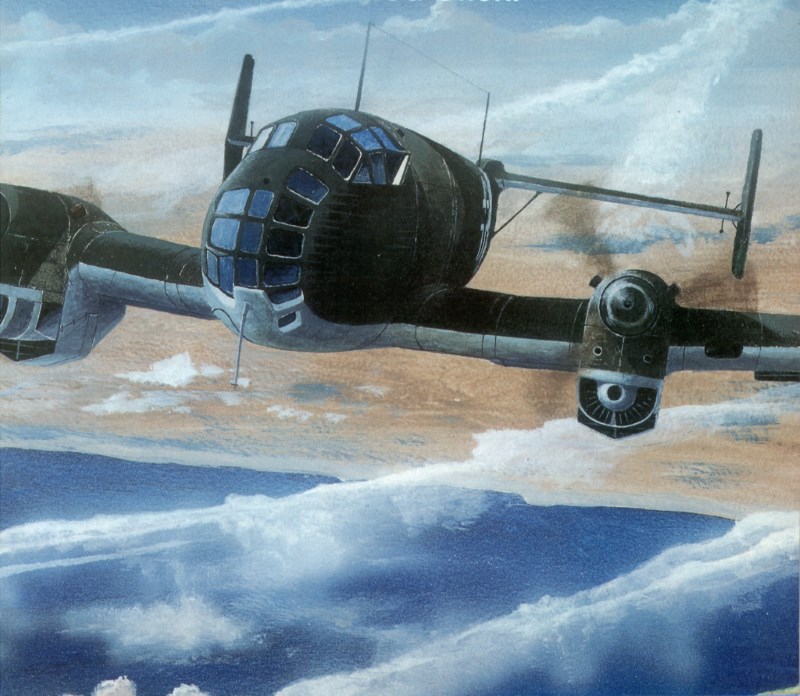
LUFTWAFFE
operations during the opening stages of Barbarossa were enormously successful
and fulfilled the Luftwaffe’s role in the overall design of the original German
plan for the destruction of the Red Army. The ultimate result of the German
decision to. attack the Soviet Union was the total destruction of the Third
Reich. It can be argued, however, that the German political initiatives after
1940 were not on par with the competence of German military operations.
Furthermore, one of the primary reasons for the defeat of Germany in World War
II was the failure of the German leadership to view military operations as
“continuation of politics by other means” oriented toward political
objectives. Notwithstanding these limitations, from a purely military perspective
the Luftwaffe campaign against the Red Air Force and the subsequent support of
the German Army during Barbarossa were successful by any measure.
Ramstein AB, Germany
Notes
1. As abridged
from E. Cobham Brewer, The Reader’s Handbook: Famous Names in Fiction,
Allusions, References, Proverbs, Plots: Stories and Poems (Philadelphia:
Lippincott, 1899), p. 88.
2. Bundesarchiv—Militararchiv
Freiburg, Federal Republic of Germany, “Der Luftwaffenaufmarsh 1941 gegen
Russland,” from Gen, Qu. 6 Abteilung.
3. Cajus Bekker, The
Luftwaffe War Diaries (New York, 1975), p. 317.
4. Bundesarchiv,
“Auszug aus den Lageberichten,” OBd.L. (Ic).
5. Bekker, p.
311.
6. Ibid., p. 312.
7. The special
crews were selected for their abilities at blind flying and navigation as they would
have to proceed to their targets at high altitude and before first light to
avoid detection by the Russians. See Bekker, The Luftwaffe War Diaries.
8. Interview with
Brigadier General Rudolf Loytved-Hardegg, Luftwaffe retired, Nürnberg, Federal
Republic of Germany, 18 January 1980.
9. Major General
Herbert J. Rieckhoff, Luftwaffe retired, “Geheimnisse um die Luftwaffe der
Sowjetunion,” Flug Wehr und Technik, Nr 8, August 1948, p. 182.
10. Bundesarchiv
(Lw 118/4 4a) “Der Feldzug gegen Sowjetrussland,” Major General
(signature illegible) retired, March 1953.
11. This is a
translation of the original German document which did not specify the tasks of
VIII Air Corps. Other accounts are more specific; for example, see:
“General Kommand VIII Fliegerkorps,’ Oberst v. Heinernann.
12. Ibid. Also
see Paul-Werner Hozzel’s Recollections and Experience of a Stuka Pilot,
1931-45 (Columbus, Ohio: Battelle, 1978).
13. Germany’s
historical position was that of the bulwark of Western Europe, behind which
Western culture was able to flourish and expand. Germany was Europe’s forward
defense against alien invasion. This role was dutifully fulfilled, in turn by
the Teutonic knights, electors of Brandenburg-Prussia, kings of Prussia, and
German emperors. This tradition was also very much alive in the Third Reich. It
is no wonder, then, that Germany’s “best and brightest” flocked to
the officer corps. In a country with easily accessible borders, small size, and
limited resources, national survival depended on having efficient and effective
armed forces.
14. A Schrwerpunkt
is a point where the success of the operation comes into critical focus. In the
French campaign of May-June l940, the Schwerpunkt was at Sedan on the
Meuse River on 13 May 1940. At that point the success or failure of the entire
campaign was decided. Had Lieutenant Colonel Hermann Balck’s First Rifle
Regiment not secured the west bank of the Meuse, then the entire campaign would
have been in serious jeopardy. As it was, the successful crossing and
subsequent Panzer drive o the French coast assured the defeat of the
Anglo-French forces.
15. The Germans
were on the offensive, and it can be logically assumed that without the delays
and vacillations of the civilian leadership at that time the German Army would
have successfully terminated the war with Russia based on a continuation of the
offensive from Smolensk toward Moscow in early August 1941.
16. Kenneth Macksey,
Kesselring: The Making of the Luftwaffe (New York, 1978), p. 83.
17. Interview
with Loytved-Hardegg. (All of this information is based on the Loytved-Hardegg
interview, unless otherwise stated.)
18. Photo
intelligence was gathered from Lufthansa civil aircraft which made scheduled
flights over the Soviet Union.
19. Reichsmarschall
Göring had a tremendous effect on the buildup of the Luftwaffe and was often
instrumental in securing priorities (raw materials and personnel) for the
Luftwaffe solely as a function of his position within the National Socialist
hierarchy. Conversely, Göring tended to use his position as head of the
Luftwaffe to influence political decisions, or more often to secure the favor
of Hitler, which had disastrous consequences, as evidenced in Göring’s boast
that the Luftwaffe alone could eliminate the BEF at Dunkirk in 1940. One of the
most painful consequences of having a major political figure head the Luftwaffe
was the ill-fated attempt to support by air transport the surrounded German
Sixth Army at Stalingrad
20. Interview,
Loytved-Hardegg.
21. Ibid.
22. Ibid.
23. Bundesarchiv,
“Auszug aus den Lageberichten OBd.L. Ic,” Lage Ost, 22.6.41-28.6.41,
p. 3, “Angriff der ersten Welle.”
24. It must be
pointed out that the entire strength of the Luftwaffe was not employed against
the U.S.S.R. at the start of Barbarossa. In fact, only 61 percent of the
Luftwaffe’s strength was on the Eastern Front at the start of the campaign. See
previously cited Lageberichten.
25. Lageberichten.
26. The SD
weapons were essentially bomblettes carried inside of a canister, similar to
numerous cluster-type munitions used by air forces today. However, frequently
the SD bomblettes would not all release from the canister after having been
armed. Occasionally a bomblette would detonate inside of the canister, or would
fall out and detonate upon landing, or while taxiing after landing These
inadvertent detonations would destroy, or severely damage, the aircraft carrying
the bomblettes. This was an especially acute prob1em for aircraft like the Ju
88 and He 111, which carried the SD canisters in an internal bomb bay. Shortly
after the start of Barbarossa, the SD-type munitions were banned for all
aircraft that had to carry them internally—as opposed to external bomb racks as
in the case with the Stuka.
27. Interview
with Colonel Robert Poetter, Luftwaffe retired, Kronburg, Federal Republic of
Germany, 23 January 1980. In his interview Colonel Poetter made extensive use
of his personal pilot’s log book, which he kept throughout the war.
28. Ibid.
29. Lageberichten.
30. Bundesarchiv,
General Otto Hoffmann von Waldau, Luftwaffe retired, “Tagebuch Man ‘39 –
10.4.42 Chief des Luftwaffen-fuehrungstabes.”
31. Richard C.
Lukas, Eagles East: The Army Air Forces and the Soviet Union 1911-1915
(Tallahassee: Florida State University Press, 1970), p. 6.
32. Alexander
Werth, Russia at War, 1941-1945 (New York, 1964), p. l42.
33. Interview
with Brigadier General Paul-Werner Hozzel, Luftwaffe retired, Karlsruhe,
Federal Republic of Germany, January 1980.
34. Erich von
Manstein, Lost Victories (Chicago, 1958).
35. Interview,
Loytved-Hardegg.
36. Lieutenant
General Paul Deichmann, Luftwaffe retired, German Air Force Operations in
Support of the Army (New York, 1968), p. 160.
37. Interview,
Poetter.
38. Interview
with Colonel Hans-Henning Freiherr von Beust, Luftwaffe retired, München,
Federal Republic of Germany, 22 January 1980.
39. Three were
flying operational missions; one was on Air Fleet I staff.
40. Interviews,
Loytved.Hardegg, Beust, Poetter, and Rudel.
41. Ibid.
42. Interview,
Poetter.
43. Bunderarchiv,
“General Kommando VIII Fliegerkorps” “Angriffe gegen
Russland” (erste Einsatze), Colonel Lothar von Heinemann, Luftwaffe
retired, Federal Republic of Germany.
44. Interview,
Loytved-Hardegg.
45. Interview
with General Johann-Adolf Graf von Keilmansegg, Bundeswehr retired, Bad
Kronzingen, Federal Republic of Germany, 19 January 1980.
46. Interview,
Beust.
47. Interview,
Poetter.
48. Interview,
Loytved-Hardegg..
49. Vladimir
Petrov, June 22, 1911: Soviet Historians and the German Invasion,
(Columbia: University of South Carolina Press, 1968), Introduction.
50. Bekker, p.
312.
Contributor
Major
Lonnie O. Ratley III (B.A.,
Florida State University; M.P.A., Golden Gate University; MA., Naval
Postgraduate School, Monterey, California), is Air Operations Staff Officer,
Directorate of Plans, Headquarters United States Air Forces in Europe, Ramstein
AB, Germany. His previous assignments include duty as an aircraft commander in
F-105, A-7, and F-4 operational fighter squadrons. Major Ratley is a graduate
of Squadron Officer School, Air Command and Staff College, the Industrial
College of the Armed Forces, and Defense Language Institute, where he
specialized in German.